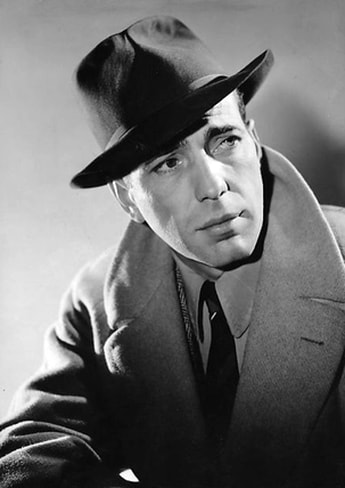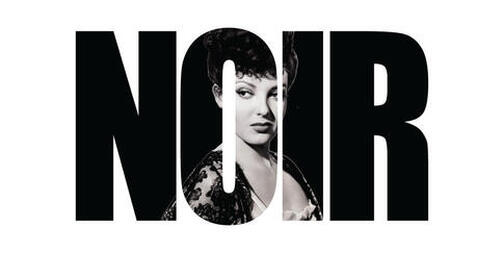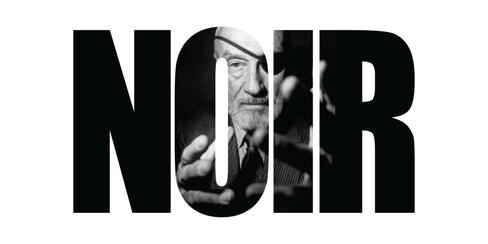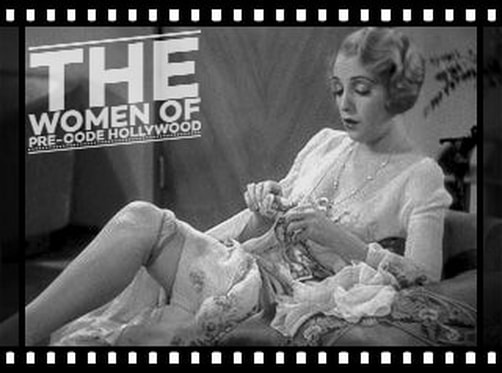HUMPHREY BOGART
AND FILM NOIR
Humphrey Bogart is widely regarded as one of the most iconic and influential actors in the film noir genre. His distinct persona, gritty performances, and memorable characters made a significant contribution to the noir style and helped shape its enduring legacy.
Bogart's most celebrated film noir role came in the 1941 classic "The Maltese Falcon," directed by John Huston. In this seminal noir, Bogart portrayed the hard-boiled private detective Sam Spade, a character who epitomized the cynical, morally ambiguous, and tough-natured protagonists often found in the genre. Bogart's portrayal of Spade set the standard for noir detectives, with his sharp dialogue delivery, world-weary demeanor, and ability to navigate the treacherous world of crime and deception.
Another landmark film noir in which Bogart made a significant impact was "The Big Sleep" (1946), directed by Howard Hawks and based on the Raymond Chandler novel. Bogart played the role of the iconic private detective Philip Marlowe, displaying his signature blend of toughness and vulnerability. His performance, filled with sharp wit and an unwavering resolve to uncover the truth, contributed to the film's convoluted plot and atmospheric tension.
Bogart's contribution to film noir extended beyond these two iconic films. He appeared in numerous other noir classics, including "Key Largo" (1948), "In a Lonely Place" (1950), and "Dark Passage" (1947). In each of these films, Bogart's presence added depth and authenticity to the stories, as he masterfully portrayed characters grappling with moral dilemmas, haunted pasts, and a sense of disillusionment.
Bogart's impact on film noir went beyond his individual performances. He became the quintessential noir leading man, embodying the genre's themes of alienation, fatalism, and moral ambiguity. His performances helped define the noir aesthetic, with his gravelly voice, hard-edged demeanor, and complex characterizations becoming synonymous with the genre itself.
Overall, Humphrey Bogart's contribution to film noir was immense. His performances in films like "The Maltese Falcon" and "The Big Sleep" set the bar for noir protagonists and influenced generations of actors and filmmakers. Bogart's talent, charisma, and ability to embody morally complex characters left an indelible mark on the film noir genre, solidifying his status as one of its most iconic figures.
Bogart's most celebrated film noir role came in the 1941 classic "The Maltese Falcon," directed by John Huston. In this seminal noir, Bogart portrayed the hard-boiled private detective Sam Spade, a character who epitomized the cynical, morally ambiguous, and tough-natured protagonists often found in the genre. Bogart's portrayal of Spade set the standard for noir detectives, with his sharp dialogue delivery, world-weary demeanor, and ability to navigate the treacherous world of crime and deception.
Another landmark film noir in which Bogart made a significant impact was "The Big Sleep" (1946), directed by Howard Hawks and based on the Raymond Chandler novel. Bogart played the role of the iconic private detective Philip Marlowe, displaying his signature blend of toughness and vulnerability. His performance, filled with sharp wit and an unwavering resolve to uncover the truth, contributed to the film's convoluted plot and atmospheric tension.
Bogart's contribution to film noir extended beyond these two iconic films. He appeared in numerous other noir classics, including "Key Largo" (1948), "In a Lonely Place" (1950), and "Dark Passage" (1947). In each of these films, Bogart's presence added depth and authenticity to the stories, as he masterfully portrayed characters grappling with moral dilemmas, haunted pasts, and a sense of disillusionment.
Bogart's impact on film noir went beyond his individual performances. He became the quintessential noir leading man, embodying the genre's themes of alienation, fatalism, and moral ambiguity. His performances helped define the noir aesthetic, with his gravelly voice, hard-edged demeanor, and complex characterizations becoming synonymous with the genre itself.
Overall, Humphrey Bogart's contribution to film noir was immense. His performances in films like "The Maltese Falcon" and "The Big Sleep" set the bar for noir protagonists and influenced generations of actors and filmmakers. Bogart's talent, charisma, and ability to embody morally complex characters left an indelible mark on the film noir genre, solidifying his status as one of its most iconic figures.
AVAILABLE FILMS:
ACROSS THE PACIFIC (1942)
ACTION IN THE NORTH ATLANTIC (1943)
ALL THROUGH THE NIGHT (1942)
AMAZING DR. CLITTERHOUSE, THE (1938)
ANGELS WITH DIRTY FACES (1938)
BEAT THE DEVIL (1953)
BIG SHOT, THE (1942)
BIG SLEEP, THE (1945)
BLACK LEGION (1937)
BROTHER ORCHID (1940)
BULLETS OR BALLOTS (1936)
CASABLANCA (1942)
CONFLICT (1945)
CRIME SCHOOL (1938)
DARK PASSAGE (1947)
DEAD END (1937)
DEAD RECKONING (1947)
ENFORCER, THE (1951)
HARDER THEY FALL, THE (1956)
HIGH SIERRA (1941)
IN A LONELY PLACE (1950)
INVISIBLE STRIPES (1939)
ISLE OF FURY (1936)
IT ALL CAME TRUE (1940)
KEY LARGO (1948)
KID GALAHAD (1937)
KING OF THE UNDERWORLD (1939)
LEFT HAND OF GOD, THE (1955)
MALTESE FALCON, THE (1941)
MARKED WOMAN (1937)
MIDNIGHT (1934)
OKLAHOMA KID, THE (1939)
PASSAGE TO MARSEILLE (1944)
PETRIFIED FOREST, THE (1936)
RACKET BUSTERS (1938)
RETURN OF DOCTOR X, THE (1939)
ROARING TWENTIES, THE (1939)
SABRINA (1954)
SAHARA (1943)
SAN QUENTIN (1937)
STAND-IN, THE (1937)
THANK YOUR LUCKY STARS (1943)
THEY DRIVE BY NIGHT (1940)
THREE ON A MATCH (1932)
TO HAVE AND HAVE NOT (1944)
TREASURE OF THE SIERRA MADRE, THE (1948)
TWO MRS. CARROLS, THE (1947)
UP THE RIVER (1930)
YOU CAN'T GET AWAY WITH MURDER (1939)
ACTION IN THE NORTH ATLANTIC (1943)
ALL THROUGH THE NIGHT (1942)
AMAZING DR. CLITTERHOUSE, THE (1938)
ANGELS WITH DIRTY FACES (1938)
BEAT THE DEVIL (1953)
BIG SHOT, THE (1942)
BIG SLEEP, THE (1945)
BLACK LEGION (1937)
BROTHER ORCHID (1940)
BULLETS OR BALLOTS (1936)
CASABLANCA (1942)
CONFLICT (1945)
CRIME SCHOOL (1938)
DARK PASSAGE (1947)
DEAD END (1937)
DEAD RECKONING (1947)
ENFORCER, THE (1951)
HARDER THEY FALL, THE (1956)
HIGH SIERRA (1941)
IN A LONELY PLACE (1950)
INVISIBLE STRIPES (1939)
ISLE OF FURY (1936)
IT ALL CAME TRUE (1940)
KEY LARGO (1948)
KID GALAHAD (1937)
KING OF THE UNDERWORLD (1939)
LEFT HAND OF GOD, THE (1955)
MALTESE FALCON, THE (1941)
MARKED WOMAN (1937)
MIDNIGHT (1934)
OKLAHOMA KID, THE (1939)
PASSAGE TO MARSEILLE (1944)
PETRIFIED FOREST, THE (1936)
RACKET BUSTERS (1938)
RETURN OF DOCTOR X, THE (1939)
ROARING TWENTIES, THE (1939)
SABRINA (1954)
SAHARA (1943)
SAN QUENTIN (1937)
STAND-IN, THE (1937)
THANK YOUR LUCKY STARS (1943)
THEY DRIVE BY NIGHT (1940)
THREE ON A MATCH (1932)
TO HAVE AND HAVE NOT (1944)
TREASURE OF THE SIERRA MADRE, THE (1948)
TWO MRS. CARROLS, THE (1947)
UP THE RIVER (1930)
YOU CAN'T GET AWAY WITH MURDER (1939)
VIDEO TRIBUTE
HTML
Humphrey Bogart

Humphrey Bogart was an iconic American actor, born on December 25, 1899, in New York City, United States. He is widely regarded as one of the greatest actors in the history of American cinema. Bogart is best known for his distinctive voice, intense performances, and his portrayal of tough, cynical characters, particularly in the genre of film noir.
Bogart began his acting career in the theater during the 1920s, appearing in various Broadway productions. He later transitioned to film, making his screen debut in the silent film "The Dancing Town" in 1928. However, it was not until the 1940s that he achieved widespread recognition and success.
Bogart joined the U.S. Navy during World War I, serving as a ship’s gunner. While roughhousing on the vessel’s wooden stairway, he tripped and fell, a splinter becoming lodged in his upper lip; the result was a scar as well as partial paralysis of the lip, resulting in the tight-set mouth and lisp that became among his most distinctive onscreen qualities.
Bogart's breakthrough role came in 1941 with "The Maltese Falcon," directed by John Huston. The film marked the beginning of his association with film noir, and he would go on to star in several other notable films of the genre, including "Casablanca" (1942), where he played the iconic character Rick Blaine, "The Big Sleep" (1946), and "Key Largo" (1948).
His collaboration with director John Huston was particularly fruitful, and they worked together on several films, including "The Treasure of the Sierra Madre" (1948), for which Bogart won his only Academy Award for Best Actor.
Bogart's on-screen presence and rugged charm made him a favorite leading man, and he starred opposite many of the top actresses of the time, including Ingrid Bergman, Lauren Bacall (whom he married in 1945), and Katharine Hepburn.
In addition to his work in film noir, Bogart also appeared in other genres, such as adventure films like "The African Queen" (1951) alongside Katharine Hepburn, and courtroom dramas like "The Caine Mutiny" (1954).
Humphrey Bogart's career was cut short when he was diagnosed with esophageal cancer. He passed away on January 14, 1957, at the age of 57. Despite his relatively short life and career, his performances continue to captivate audiences and he remains an enduring icon of Hollywood's Golden Age.
Bogart began his acting career in the theater during the 1920s, appearing in various Broadway productions. He later transitioned to film, making his screen debut in the silent film "The Dancing Town" in 1928. However, it was not until the 1940s that he achieved widespread recognition and success.
Bogart joined the U.S. Navy during World War I, serving as a ship’s gunner. While roughhousing on the vessel’s wooden stairway, he tripped and fell, a splinter becoming lodged in his upper lip; the result was a scar as well as partial paralysis of the lip, resulting in the tight-set mouth and lisp that became among his most distinctive onscreen qualities.
Bogart's breakthrough role came in 1941 with "The Maltese Falcon," directed by John Huston. The film marked the beginning of his association with film noir, and he would go on to star in several other notable films of the genre, including "Casablanca" (1942), where he played the iconic character Rick Blaine, "The Big Sleep" (1946), and "Key Largo" (1948).
His collaboration with director John Huston was particularly fruitful, and they worked together on several films, including "The Treasure of the Sierra Madre" (1948), for which Bogart won his only Academy Award for Best Actor.
Bogart's on-screen presence and rugged charm made him a favorite leading man, and he starred opposite many of the top actresses of the time, including Ingrid Bergman, Lauren Bacall (whom he married in 1945), and Katharine Hepburn.
In addition to his work in film noir, Bogart also appeared in other genres, such as adventure films like "The African Queen" (1951) alongside Katharine Hepburn, and courtroom dramas like "The Caine Mutiny" (1954).
Humphrey Bogart's career was cut short when he was diagnosed with esophageal cancer. He passed away on January 14, 1957, at the age of 57. Despite his relatively short life and career, his performances continue to captivate audiences and he remains an enduring icon of Hollywood's Golden Age.
Quotes:
[on Lauren Bacall] "She's a real Joe. You'll fall in love with her like everybody else."
[on the House Un-American Activities Committee] "They'll nail anyone who ever scratched his ass during the National Anthem."
"I came out here with one suit and everybody said I looked like a bum. Twenty years later Marlon Brando came out with only a sweatshirt and the town drooled over him. That shows how much Hollywood has progressed."
"I don't approve of the John Waynes and the Gary Coopers saying 'Shucks, I ain't no actor -- I'm just a bridge builder or a gas station attendant.' If they aren't actors, what the hell are they getting paid for? I have respect for my profession. I worked hard at it."
"Acting is like sex: you either do it and don't talk about it, or you talk about it and don't do it. That's why I'm always suspicious of people who talk too much about either."
[on Ingrid Bergman] "I didn't do anything I've never done before, but when the camera moves in on that Bergman face, and she's saying she loves you, it would make anybody feel romantic."
[on Katharine Hepburn] "She talks at you as though you were a microphone. She lectured the hell out of me on temperance and the evils of drink. She doesn't give a damn how she looks. I don't think she tries to be a character. I think she is one."
[on Bette Davis] "Even when I was carrying a gun, she scared the be-jesus out of me."
"I'm not good-looking. I used to be but not any more. Not like Robert Taylor. What I have got is I have character in my face. it's taken an awful lot of late nights and drinking to put it there. When I go to work in a picture, I say, 'Don't take the lines out of my face. Leave them there."
- Humphrey Bogart
Trivia:
Named his daughter, Leslie Bogart, "Leslie" to show his gratitude to Leslie Howard, who got him his big break in The Petrified Forest (1936).
Co-starred not only in Casablanca (1942), the film rated No. 1 on American Film Institute's list of Top 100 U.S. love stories (2002), but in four other films on AFI romance list: The African Queen (1951), ranked at #xx; Dark Victory (1939), ranked at #32; Sabrina (1954),ranked at #54; and To Have and Have Not (1944), ranked at #60.
Although usually considered a quiet and accommodating actor by most of his collaborators, he became disliked by William Holden and Billy Wilder during the filming of Sabrina (1954). A good friend before they made the film, Wilder later said that Bogart, near the end of his life, apologized for his behavior on the set and said it was due to his personal problems. Even so, Audrey Hepburn got along with him despite his criticism of her.
Off the set, he and Ingrid Bergman hardly spoke during the filming of Casablanca (1942). She said later, "I kissed him, but I never knew him." Years later, after Ingrid Bergman had become involved with Italian director Roberto Rossellini, and borne him a child, he bawled her out for it. "You used to be a great star," he said. "What are you now?" "A happy woman," she replied. Bogart's coolness towards Bergman was later revealed to have been caused by the violent jealousy of his wife at the time, Mayo Methot, whose fears were realized when Bogart entered an affair with future wife Lauren Bacall.
Almost all of the roles that made him a star (after a decade of toiling in minor films) were roles he got because George Raft had turned them down, from High Sierra (1941), in which Bogie was first noticed as a viable box office draw, to Casablanca (1942), which made him a true international star. Ironically, after having been overshadowed by Raft the whole first half of his career, Bogart remains a legend while Raft is all-but-forgotten.
So as to not look short next to co-stars like Ingrid Bergman and Paul Henreid, through most of the shooting of Casablanca (1942) (and in a few of his other films) Bogart wore platforms under his shoes that added nearly 5 inches of height to his frame.
Was producer Hal B. Wallis' first choice as Burt Lancaster's co-star in Gunfight at the O.K. Corral (1957). The role was eventually played by Kirk Douglas.
Starred in six Oscar Best Picture nominees: Dead End (1937), Dark Victory (1939), The Maltese Falcon (1941), Casablanca (1942), The Treasure of the Sierra Madre (1948) and The Caine Mutiny (1954), with Casablanca being the only winner.
Co-starred not only in Casablanca (1942), the film rated No. 1 on American Film Institute's list of Top 100 U.S. love stories (2002), but in four other films on AFI romance list: The African Queen (1951), ranked at #xx; Dark Victory (1939), ranked at #32; Sabrina (1954),ranked at #54; and To Have and Have Not (1944), ranked at #60.
Although usually considered a quiet and accommodating actor by most of his collaborators, he became disliked by William Holden and Billy Wilder during the filming of Sabrina (1954). A good friend before they made the film, Wilder later said that Bogart, near the end of his life, apologized for his behavior on the set and said it was due to his personal problems. Even so, Audrey Hepburn got along with him despite his criticism of her.
Off the set, he and Ingrid Bergman hardly spoke during the filming of Casablanca (1942). She said later, "I kissed him, but I never knew him." Years later, after Ingrid Bergman had become involved with Italian director Roberto Rossellini, and borne him a child, he bawled her out for it. "You used to be a great star," he said. "What are you now?" "A happy woman," she replied. Bogart's coolness towards Bergman was later revealed to have been caused by the violent jealousy of his wife at the time, Mayo Methot, whose fears were realized when Bogart entered an affair with future wife Lauren Bacall.
Almost all of the roles that made him a star (after a decade of toiling in minor films) were roles he got because George Raft had turned them down, from High Sierra (1941), in which Bogie was first noticed as a viable box office draw, to Casablanca (1942), which made him a true international star. Ironically, after having been overshadowed by Raft the whole first half of his career, Bogart remains a legend while Raft is all-but-forgotten.
So as to not look short next to co-stars like Ingrid Bergman and Paul Henreid, through most of the shooting of Casablanca (1942) (and in a few of his other films) Bogart wore platforms under his shoes that added nearly 5 inches of height to his frame.
Was producer Hal B. Wallis' first choice as Burt Lancaster's co-star in Gunfight at the O.K. Corral (1957). The role was eventually played by Kirk Douglas.
Starred in six Oscar Best Picture nominees: Dead End (1937), Dark Victory (1939), The Maltese Falcon (1941), Casablanca (1942), The Treasure of the Sierra Madre (1948) and The Caine Mutiny (1954), with Casablanca being the only winner.




